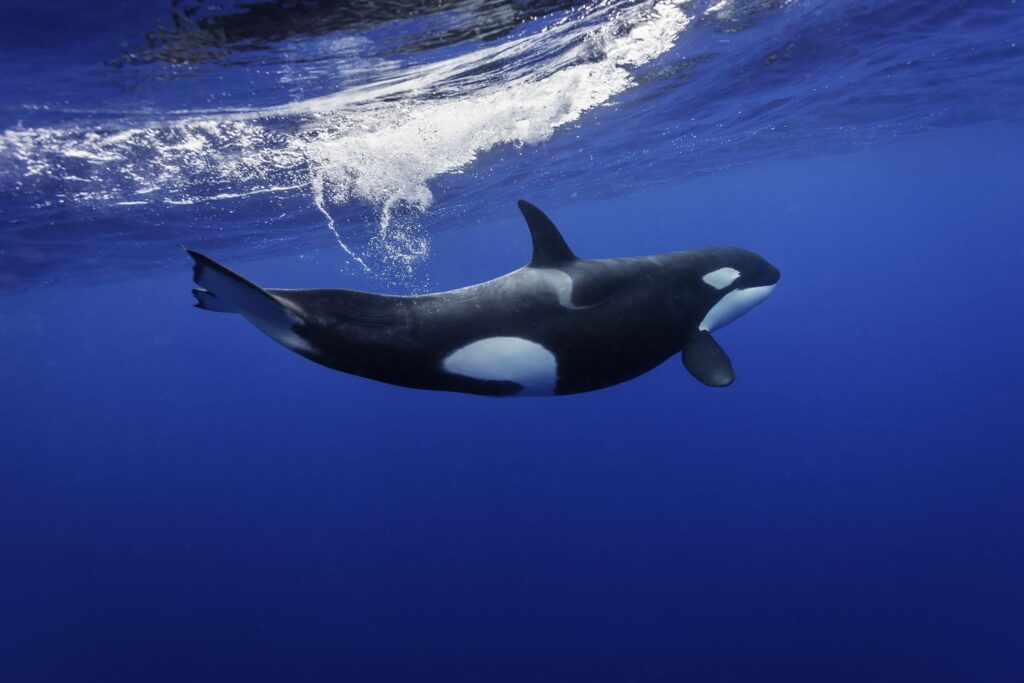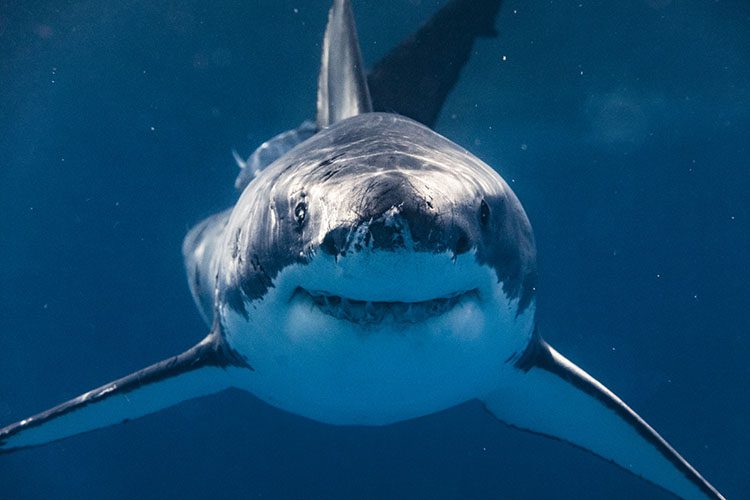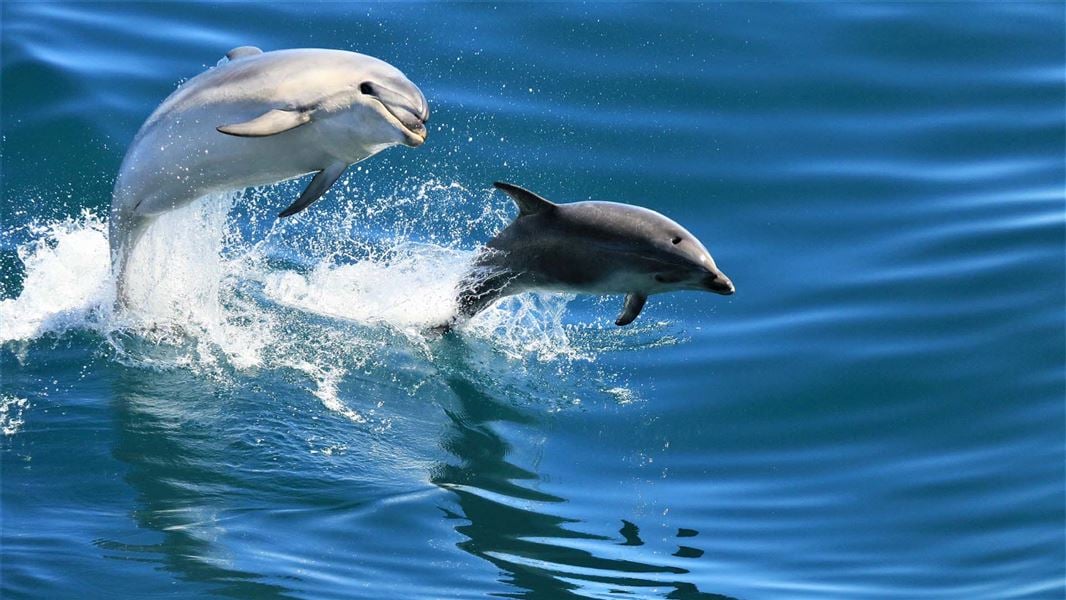Welcome to BungeeCity.com, where we dive deep into the fascinating world of dolphins and their predators! Have you ever wondered what animals eat dolphins? Well, get ready to be amazed as we unravel the secrets of the main dolphins predators in this wild aquatic adventure.
Picture this: a majestic dolphin gracefully gliding through the ocean waves, its sleek body cutting through the water with effortless grace. But lurking beneath the surface lies a predator that strikes fear into the hearts of even the most fearless dolphins.
Enter the killer whale, the main predator of these intelligent and playful creatures. With its powerful presence and cunning hunting techniques, the killer whale reigns supreme as the top predator of the dolphin world. But hold on, there’s more to this story than meets the eye.
While the killer whale may be the star of the show, there are other predators lurking in the shadows. From sharks to larger fish species, dolphins constantly face the threat of being on the menu for these hungry hunters.
But wait, there’s a twist! Not all predators come from the depths of the sea. Humans, yes, we are also a significant predator to dolphins. Whether it’s accidental entanglement in fishing nets or intentional hunting, our actions have a profound impact on these incredible marine creatures.
As we delve deeper into the topic, we’ll also explore the role of dolphins in the food chain. What makes them such a crucial link in the intricate web of marine life? Prepare to be amazed by the interconnectedness of these oceanic ecosystems.
So, grab your snorkel and get ready for a thrilling underwater journey as we uncover the secrets of what animals eat dolphins. From the awe-inspiring killer whale to the unexpected human predator, this blog post will leave you with a newfound appreciation for these remarkable creatures. Let’s dive in!
Understanding Dolphins and Their Predators
Among the diverse inhabitants of the marine ecosystem, dolphins distinguish themselves through their intelligence, playful demeanor, and their significant role as apex predators. Despite their prowess, they are not invincible. They face threats from certain predators, a fact that adds a layer of complexity to their survival narrative.
Dolphins, with their powerful and agile bodies, are formidable predators in their own right. However, they too have to contend with the harsh reality of the food chain. Their predators usually strike opportunistically, targeting young calves and sick adults, who are more vulnerable.
Let’s delve into an overview of some of the main predators of these marine mammals:
| Predator | Type | Methods |
|---|---|---|
| Orcas (Killer Whales) | Marine Mammal | Group hunting, surprise attacks |
| Sharks (Bull, Dusky, Great White, Tiger) | Fish | Solo hunting, ambush, scavenging |
| Humans | Land Mammal | Fishing, hunting for sport or food |
The killer whale, also known as the Orca, is ironically a type of dolphin and stands as the main predator of other dolphins. Orcas are known for their intelligence, rivalling that of dolphins, which makes them a significant threat.
Various species of sharks also pose a risk to dolphins, especially the calves and sick adults. However, a healthy, full-grown dolphin is a force to be reckoned with. It’s rare for a shark to risk a direct confrontation with an adult dolphin. Their intelligence, agility, and social nature make them a difficult prey.
Shockingly, humans too are a part of this list. Although not a natural predator, human activities have posed significant threats to dolphins. Fishing nets, pollution, and direct hunting have all taken a toll on dolphin populations.
This dynamic, the dance between predator and prey, plays a crucial role in shaping the life of dolphins and the marine ecosystem at large. In the upcoming sections, we will further explore each of these predators and their unique hunting techniques, painting a complete picture of what it means to be a dolphin in the vast ocean.
The Main Predator: The Killer Whale

the killer whale
In the vast, open waters of the ocean, dolphins navigate their world with grace and agility. But even these intelligent, powerful swimmers have a natural adversary that dwells alongside them in the marine realm – the killer whale, also known as the orca. This fearsome creature is not only at the pinnacle of the food chain but is ironically a cousin of the dolphin, belonging to the largest species of the dolphin family.
Despite their common lineage, the relationship between dolphins and killer whales is one of survival, not kinship. Orca’s infamous black and white figure looming in the distance is a sight that sends chills down the spine of even the most robust dolphin. The orca’s size, strength, and hunting prowess make it an unparalleled threat to dolphins, who must rely on their speed and agility to escape these lethal predators.
It’s an interesting twist of nature that the only natural predator of dolphins is, in fact, a dolphin itself. But the orca, with its colossal size and formidable hunting skills, is in a league of its own. It stands unchallenged at the ocean’s apex, with no marine mammal or animal daring to hunt it for food. This undisputed dominance of the killer whale is a testament to their power and prowess, securing their position as the apex predator of the ocean.
Check out: What Eats Octopus? Discover the Top 12 Predators That Feast on These Clever Cephalopods!
It’s a cycle of life that plays out beneath the ocean’s surface, a dance of predator and prey where the line between hunter and hunted can blur. In the vast expanse of the sea, the dolphin’s world is as beautiful as it is perilous, with the shadow of the killer whale never far away.
Other Predators

sharks
In the vast expanse of the ocean, dolphins are not only known for their playful demeanor but also for their remarkable survival skills. The marine world is a complex web of predators and prey, and dolphins, despite their intelligence and agility, are not exempt from this cycle.
Among the vast array of marine creatures, a few pose a threat to dolphins. Notorious predators such as bull sharks, dusky sharks, the formidable great white sharks, and the stealthy tiger sharks, have been known to hunt dolphins. However, their predation is typically limited to young calves and sick adults. These predators often think twice before daring to hunt a healthy, fully-grown dolphin. The risk of injury or death, owing to the dolphin’s agility and intelligence, is too great.
For instance, tiger sharks have a well-documented preference for younger and weaker dolphins. This is because adult dolphins can be formidable adversaries, using their speed and group numbers to defend against these predators. The survival instinct of these majestic marine creatures is truly a testament to the raw and unpredictable nature of the ocean’s intricate food web.
When Dolphins Become Predators
However, it is not always the case that dolphins are on the receiving end of predation. In a fascinating twist of nature, dolphins, when faced with scarcity of their preferred food, can turn into predators themselves.
Interestingly, killer whales, despite being a larger species of dolphins, have been observed hunting and consuming other dolphin species. This behaviour can be attributed to either sheer hunger or the innate predatory instinct that these creatures possess. Their superior intelligence and group hunting strategies make them formidable predators in the marine ecosystem, displaying the raw and often brutal reality of survival in the wild.
The ocean’s dynamic ecosystem continues to intrigue and surprise us, as we delve deeper into the complex relationships and survival strategies of its inhabitants. The story of dolphins and their predators is a testament to the intricate balance of the marine world.
The Human Predators

human and dolphins
Our exploration of dolphin predators would be woefully incomplete without acknowledging the role of humans in this intricate web of survival. As shocking as it may seem, humans are significant predators of dolphins. The images of these jovial creatures leaping gracefully over waves belie the harsh reality of their struggle for existence. In the grand scheme of the ocean’s food chain, the annual hunting and killing of over 10,000 dolphins by humans adds a chilling dimension to their survival story.
While some may perceive dolphins as playful companions on a serene boat ride, others see them as a source of sustenance. Dolphin meat, an unconventional food source to many, is a delicacy in several parts of the world. The global demand for dolphin meat, often euphemistically referred to as sea pork or Chancho Marino, fuels this annual slaughter.
Across the shores of China, the inviting aroma of sea pork wafts through the air, attracting locals and tourists alike. This country, along with Japan, India, Malaysia, South Korea, and Nigeria, is a key player in the consumption of dolphin meat. The culinary traditions of these countries have integrated this marine mammal into their diets, a practice that continues to this day despite growing international concerns over the sustainability and ethics of dolphin hunting.
It’s important to note, however, that not all hunted dolphins end up on dinner plates. A small percentage of the catch is used as bait, another testament to the multi-faceted role dolphins play in the intricate dance of life and death in the oceanic world.
The human predation of dolphins is a complex issue that intertwines culture, tradition, and survival, echoing the stark reality of nature itself. As we delve further into our exploration of dolphins in the food chain, we realize that the lines between predator and prey are often blurred, painted with shades of survival, necessity, and the relentless will to thrive.
Unveiling the Role of Dolphins in the Marine Food Chain
Have you ever stopped to ponder the intricate web of life woven beneath the azure depths of the ocean? The dolphins, with their playful leaps and charming demeanor, play a pivotal role in this grand tapestry. It’s a role that belies their typically gentle image. Despite being preyed upon by certain predators, dolphins are remarkably close to being apex predators in the marine food chain.
These intelligent marine creatures have a diet as diverse as the ocean itself. They feast on a smorgasbord of sea life, including both large and small fishes, squids, octopuses, and crustaceans. This diet places dolphins a notch above large fish and squids in the food chain. These creatures, in turn, feed on smaller fish and krill, the tiny shrimp-like animals that sustain much of the ocean’s life.
And where does the krill get its sustenance? Well, krill feed on plankton – microscopic organisms that drift along ocean currents. Plankton, in their turn, feed on dead animals, thus completing the cycle of the marine food chain.
A Distinct Line Between Dolphins and Whales
It’s not uncommon for people to confuse dolphins and whales. After all, some dolphins are so large that they’re often referred to as whales. However, these two creatures, although both mammals adapting to life in the marine world, are distinct species.
Whales, contrary to what many believe, do not include dolphins in their menu. They are more inclined towards a diet of smaller fishes. This preference is one of the many differences that draw a clear line between dolphins and whales.
So, the next time you see a dolphin leaping gracefully through the waves, remember the crucial role it plays in the grand scheme of the marine world. It is not just a charming sight to behold but a vital link in the ocean’s complex food chain.
Conclusion
Every creature in the vast oceanic world plays its part in the rhythm of life, and dolphins, with their intelligence and agility, are no different. As we delve deeper into their lives, we uncover a harsh reality that even these near apex predators are not immune to the threats of predation.
Read more: Which Impressive Fish Have the Biggest Eyes? Discover the 15 Astonishing Species!
Imagine a group of dolphins gliding effortlessly beneath the waves. Their streamlined bodies are designed for speed, allowing them to elude many would-be predators. Yet, even such deft swimmers are not invincible. Their agile movements may deter many, but there are creatures, such as the mighty Killer Whales and various species of relentless sharks, that are undeterred by the dolphins’ intelligence and speed.
Stirring up the waters are the Killer Whales, or Orcas, the largest of the dolphin family and the most intelligent. They are known to prey on their dolphin cousins, a chilling reminder that even in the animal kingdom, relations don’t always guarantee safety.
Then we have the sharks, the infamous Bull Sharks, Dusky Sharks, Great White Sharks, and Tiger Sharks. Though they find it arduous to hunt a fully healthy dolphin, they pose a significant threat to the young, old, or infirm dolphins. Their sharp teeth and powerful jaws are a force to be reckoned with, even for the smart and swift dolphins.
But the most prominent threat to dolphins doesn’t lurk beneath the ocean’s surface. It walks on the land. Yes, it’s none other than humans. The consumption of dolphin meat, a delicacy in several parts of the world, continues despite the ethical and sustainability concerns that it raises. This stark reality paints a vivid picture of the survival of the fittest principle that governs not just the land but also the depth of the seas.
The main predator of dolphins is the killer whale, also known as the orca.
Bull sharks, dusky sharks, great white sharks, and tiger sharks are also predators of dolphins.
Yes, humans are predators of dolphins.
Dolphins are close to being apex predators in the food chain, but the killer whale, which is a type of dolphin, is at the very top of the dolphin food chain.

